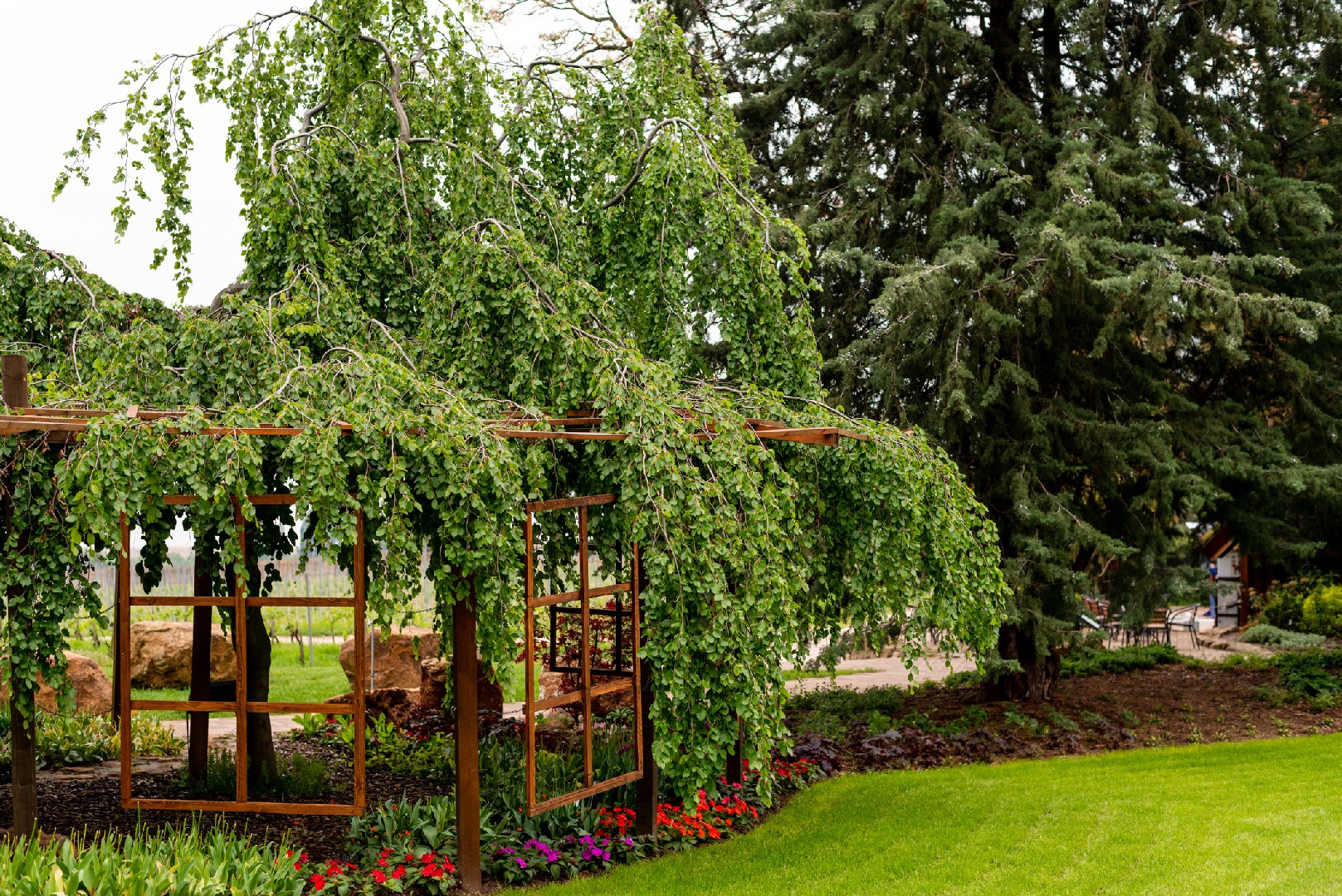![Rectangle]()
Pergolas: More Than a Beautiful Addition
Pergolas are not just beautiful additions to a garden; they can also serve multiple practical purposes. Understanding the structure and purpose of pergolas is essential in maximizing their potential and creating a functional and inviting outdoor space.
A pergola is a structure with vertical posts and a roof framework that can be left open or covered with plants, fabric, or panels. Its purpose is to provide shade and define an outdoor space. By incorporating a pergola into your garden, you can create a comfortable and inviting area to relax or entertain guests.
When it comes to pergola design, there are various styles and materials to choose from. Traditional pergolas feature a simple design with evenly spaced posts and an open roof framework. This style is perfect for those who prefer a classic and timeless look. For a more modern aesthetic, you can opt for a pergola with clean lines, sleek materials like aluminum or steel, and a minimalist design.
In terms of materials, wood is a popular choice for pergolas due to its natural beauty and versatility. Cedar and redwood are particularly well-suited for outdoor structures as they are resistant to rot and decay. Metal pergolas, such as those made from aluminum or steel, offer a more contemporary look and require less maintenance.
One of the key benefits of pergolas is the shade they provide. By strategically positioning a pergola in your garden, you can create a shaded area where you can relax and escape from the heat of the sun. This is especially valuable during the summer months when spending time outdoors may be uncomfortable without adequate shade.
Another advantage of pergolas is their ability to define outdoor spaces. By adding a pergola to your garden, you can create distinct areas for dining, lounging, or entertaining. This helps to organize your outdoor space and gives it a sense of purpose and structure. You can further enhance the atmosphere by adding outdoor furniture, cushions, and lighting.
Pergolas also offer opportunities for vertical gardening. By selecting climbing plants such as vines, roses, or wisteria, you can create a stunning green canopy that provides additional shade and privacy. This not only adds beauty to your pergola but also attracts birds, butterflies, and other wildlife to your garden.
To maintain the longevity and beauty of your pergola, regular maintenance is essential. Depending on the material used, you may need to apply a protective coat of stain or paint every few years to prevent weathering. Additionally, it is important to inspect the structure for any damage and make repairs as needed.
In conclusion, pergolas are not only beautiful additions to a garden but also serve a practical purpose. By understanding their structure and purpose, exploring different styles and materials, and harnessing their benefits of shade, defining outdoor space, and supporting climbing plants, you can create a functional and inviting outdoor area. Whether you are looking to relax, entertain, or enhance the aesthetics of your garden, a pergola is a versatile and worthwhile investment.





